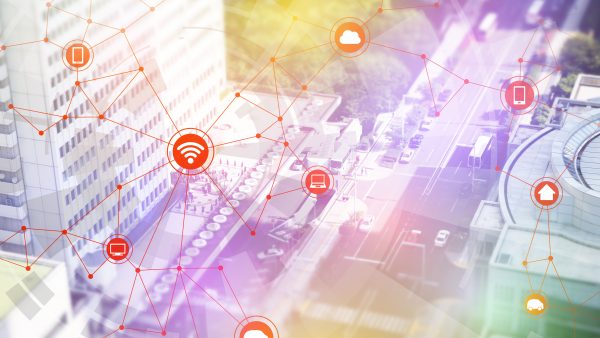Weather, navigation, comfort and security become one when we get connected. Plastics can transform an autonomous car into a global extension of personal identity. Plastics help create customizable, personalized interiors. There are more mobile phones on the planet than people. And, there are more connected devices than mobile phones! If you are not connected, your future will be.
Infotainment
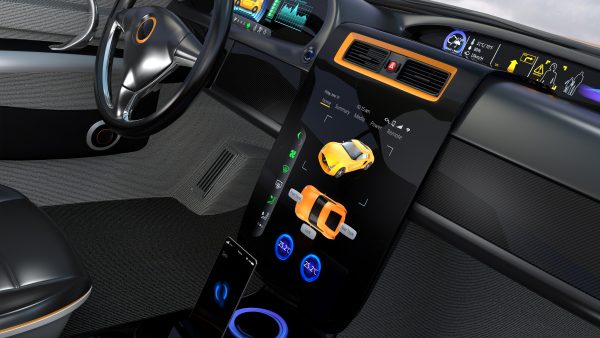
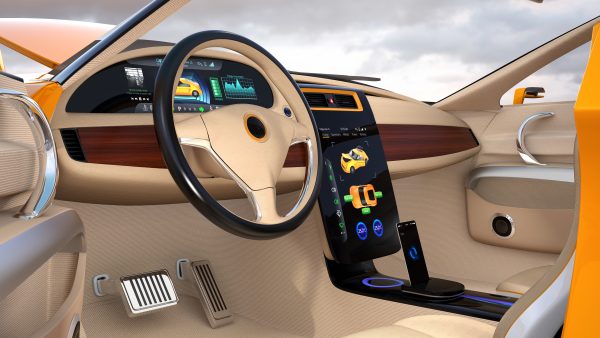
Cockpit concepts from automotive interior suppliers such as Yanfeng Automotive Interiors and OEMs including Volvo already depict the use of several plastic screens within the car, both for the driver and passengers. In-vehicle displays have evolved to incorporate emerging technologies allowing popular apps and those of tomorrow. Smart plastic molded-in-place switches and controls can keep infotainment within an arm’s reach while consolidating parts and components on the dash, armrests interior roof and console. Scratch-resistant plastic screen displays can help prevent vandalism in shared vehicles. Display technologies also create the powerful potential for the outer surfaces of cars to act as public displays or surface color changes, the possibilities are virtually endless.
Software & Data Management
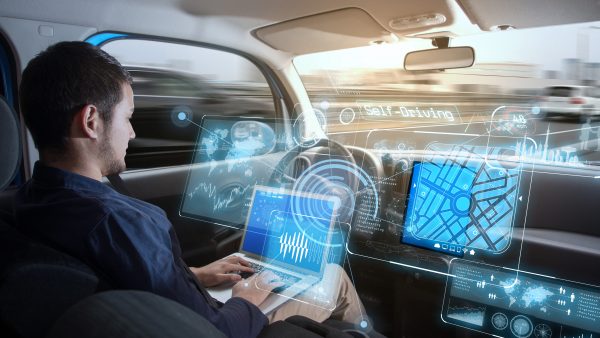
Plastics might just enable the processing of four terabytes of estimated data that an autonomous car will generate in about an hour and a half of driving – or the same amount of time a typical person spends in their car each day. Cameras, radar, sonar, GPS, LIDAR and more will use up those four terabytes of data processing quickly. According to Gahl Berkooz, of Ford Motor Co., data systems in modern, advanced vehicles will intercept more data, faster. Polymers may soon provide solid-state plastic RAM (random access memory) to assist reading and processing this vast data flow. Polymer memory can be non-volatile (like a hard drive) and enables high storage capacity, with up to 10X faster access than conventional memory devices. Plastic RAM can function as permanent storage or as read-only memory (ROM). Low power integrated circuits (CMOS, complementary metal-oxide semiconductors) integrated with polymer memory can offer memory heat management advantages and memory storage weight improvements.
Artificial Intelligence
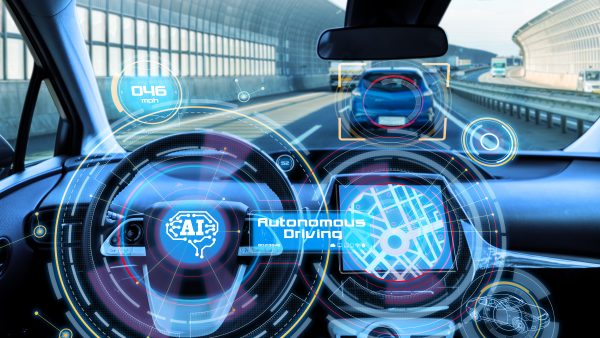 Artificial intelligence (AI) is a key safety element in the world of self-driving cars but plastics can help enable the weight savings for the needed advanced-computing that will crunch that data. AI will be an important asset for vehicles to gather, sort and integrate all the information needed to navigate safely. Karl Iagnemma, the CEO of self-driving technology company NuTonomy agrees. Think of it this way he says: Either a vehicle can carry within each car all the possible data covering all the possible instances it might encounter or it can use artificial intelligence to “learn” probable best responses to recurring vehicle situations, prioritize tasks within a complex context in milliseconds, and scale vehicle reactions. AI can take the place of massive data storage equipment but will need heavy, fast and powerful computing power for raw signal discrimination, filtering, detection, decoding, analysis, and regression. Plastics can help save the weight necessary for these new complex computer AI systems. Plus, plastics have a long history of helping safeguard vehicle electronics from destructive heat and vibration. Plastics may even play a role in heat-resistant and lightweight smart polymer memory as above in Data Management.
Artificial intelligence (AI) is a key safety element in the world of self-driving cars but plastics can help enable the weight savings for the needed advanced-computing that will crunch that data. AI will be an important asset for vehicles to gather, sort and integrate all the information needed to navigate safely. Karl Iagnemma, the CEO of self-driving technology company NuTonomy agrees. Think of it this way he says: Either a vehicle can carry within each car all the possible data covering all the possible instances it might encounter or it can use artificial intelligence to “learn” probable best responses to recurring vehicle situations, prioritize tasks within a complex context in milliseconds, and scale vehicle reactions. AI can take the place of massive data storage equipment but will need heavy, fast and powerful computing power for raw signal discrimination, filtering, detection, decoding, analysis, and regression. Plastics can help save the weight necessary for these new complex computer AI systems. Plus, plastics have a long history of helping safeguard vehicle electronics from destructive heat and vibration. Plastics may even play a role in heat-resistant and lightweight smart polymer memory as above in Data Management.
Cyber Security
Hackers may try to access your Internet of Things (IOT) physically and/or wirelessly, but plastics can help prevent both methods of intrusion. Physically, plastic is a resilient, tamper-resistant material important to the protection of electronics. In autonomous vehicles, plastics will be a material of choice to minimize vandalism risks. Wirelessly, autonomous vehicles will extend a driver’s connectivity… to a diverse range of real-world devices such as a home, smart tools, door locks, [and more]… your Internet of Things — your life. But, plastics operate uniquely as either an electric conductor or an insulator. So, while adding physical component security, plastics can perform as an active conducting part of a car’s electronic circuits, critical to denying access to intruding hackers. OEMs are exploring a wide spectrum of cybersecurity measures to “gatekeep incoming and outgoing vehicle-to-vehicle messaging to build proper safety functions and to prevent unauthorized access. Cybersecurity is paramount for autonomous vehicle safety (NHTSA).
Transportation Grid
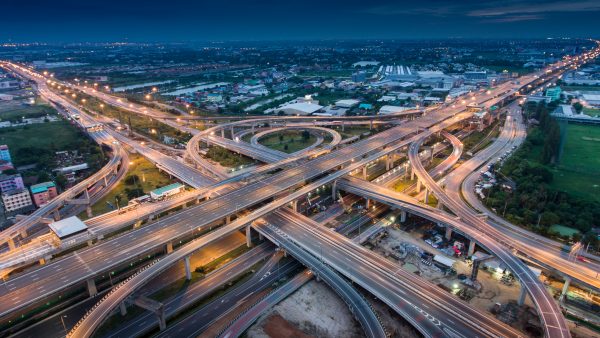
 The future’s smart transportation grid and its enabling equipment will communicate routinely with autonomous vehicles and plastics will help make that possible. Plastic shielded network vehicle power stations, traffic flow monitors, stop light timers, lane diversion signals, temporary barriers, travel direction signs, police and fire right-of-way equipment will communicate with vehicles emitting similar signals to maintain safety and flow. Law enforcement, drivers, and delivery persons will share real-time information from the transportation grid gathered as vehicles share information. Speed and frequency of trips by city metro buses, school buses, trash trucks, emergency vehicles, taxis, and autonomous vehicles will donate traffic and congestion data. That data overlaid with real-time CCTV cameras of accidents, delays and police presence will guide improved flow. Soon patterns emerge to shape “predictive” artificially intelligent models of likely congestion, speeds, and delays throughout the grid. Plastic barriers, signs, monitors, etc. will need plastics’ radio-signal transparency. Shielding infrastructure components (the Internet of Things), plastics will be fashioned to resist UV radiation and weather helping keep electronics safe from transmission interference.
The future’s smart transportation grid and its enabling equipment will communicate routinely with autonomous vehicles and plastics will help make that possible. Plastic shielded network vehicle power stations, traffic flow monitors, stop light timers, lane diversion signals, temporary barriers, travel direction signs, police and fire right-of-way equipment will communicate with vehicles emitting similar signals to maintain safety and flow. Law enforcement, drivers, and delivery persons will share real-time information from the transportation grid gathered as vehicles share information. Speed and frequency of trips by city metro buses, school buses, trash trucks, emergency vehicles, taxis, and autonomous vehicles will donate traffic and congestion data. That data overlaid with real-time CCTV cameras of accidents, delays and police presence will guide improved flow. Soon patterns emerge to shape “predictive” artificially intelligent models of likely congestion, speeds, and delays throughout the grid. Plastic barriers, signs, monitors, etc. will need plastics’ radio-signal transparency. Shielding infrastructure components (the Internet of Things), plastics will be fashioned to resist UV radiation and weather helping keep electronics safe from transmission interference.
Stay Up to Date
Sign up to receive our newsletter and get the latest delivered to your inbox.
The Future Starts Here
The Automotive Plastics and Polymer Composites Roadmap for Future Mobility is charting the path forward in autonomy, connectivity, circularity, electrification, shared mobility, and sustainability.
Access the Roadmap

